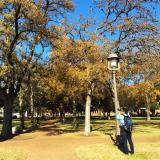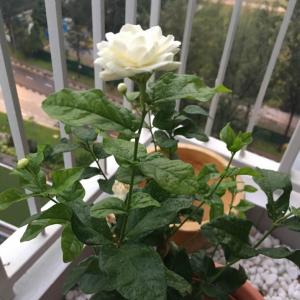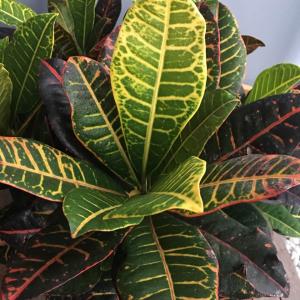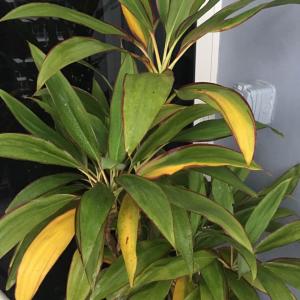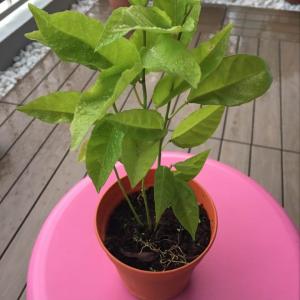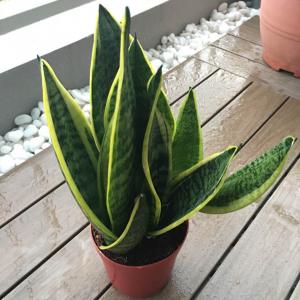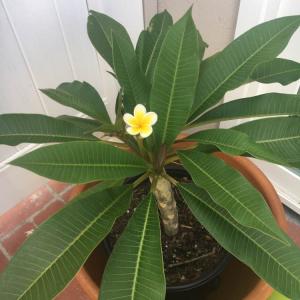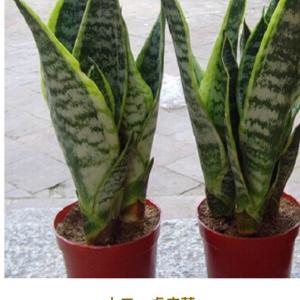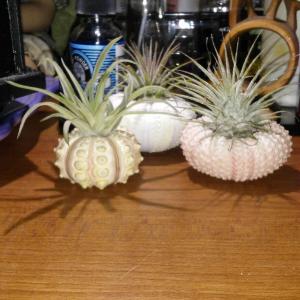文章
Dummer. ゛☀
2017年07月14日

Family - Rhamnaceae
Stems - Woody, multiple from base, to 1m tall, branching, ferruginous, sparse pubescent, rugose. New growth sericeous, green.
Leaves - Alternate, petiolate, stipulate. Stipules 4.5mm long, 1mm broad, pubescent, attenuate. Petioles to 7mm long, pubescent. Blades to 6cm long, -3cm broad, oblong-elliptic to lance-oblong, crenate-serrate, blunt to acute, densely pubescent(villous) and dull below, deep green and pubescent above, rounded to cuneate at base.
Inflorescence - Terminal panicles from new growth. Peduncles shorter then subtending leaf, to 2cm long, lanate. Pedicels white, to 1.4cm long, .6mm in diameter, expanding just below hypanthium.
Flowers - Petals 5, white, long clawed, spreading, glabrous, to 2.5mm long. Limb to 1.2mm broad, cupped. Stamens 5, opposite petals, erect. Filaments to 2mm long, white, glabrous. Anthers .2mm long, yellow. Style 3-lobed, 2mm long, glabrous, white. Ovary 3-locular, green, surrounded by peringynous disk. Calyx lobes 5, in-curved, white, glabrous, to 1.6mm long. Hypanthium white, 1mm long, persistent.
Flowering - April - June.
Habitat - Upland and rocky prairies, loess hills, glades, rocky woods.
Origin - Native to U.S.
Other info. - Steyermark lists two varieties for this species in the state. The plant described above is var. pubescens T.&G. ex Wats. A synonym for this variety is C. herbaceous var. pubescens (T.&G.) Shinners. This is the most common variation found in the state. The other variety, var. ovatus, has leaves which are glabrous to only sparse pubescent below.
This species is scattered throughout portions of the state but is most frequent in the western half of the state. Another species, C. americanus L., resembles this species but the former has more ovate leaves, more cylindric inflorescences, and longer peduncles. C. americanus is listed in this same section of this website. Both species are brewed as tea for medicinal uses.
Stems - Woody, multiple from base, to 1m tall, branching, ferruginous, sparse pubescent, rugose. New growth sericeous, green.

Leaves - Alternate, petiolate, stipulate. Stipules 4.5mm long, 1mm broad, pubescent, attenuate. Petioles to 7mm long, pubescent. Blades to 6cm long, -3cm broad, oblong-elliptic to lance-oblong, crenate-serrate, blunt to acute, densely pubescent(villous) and dull below, deep green and pubescent above, rounded to cuneate at base.
Inflorescence - Terminal panicles from new growth. Peduncles shorter then subtending leaf, to 2cm long, lanate. Pedicels white, to 1.4cm long, .6mm in diameter, expanding just below hypanthium.

Flowers - Petals 5, white, long clawed, spreading, glabrous, to 2.5mm long. Limb to 1.2mm broad, cupped. Stamens 5, opposite petals, erect. Filaments to 2mm long, white, glabrous. Anthers .2mm long, yellow. Style 3-lobed, 2mm long, glabrous, white. Ovary 3-locular, green, surrounded by peringynous disk. Calyx lobes 5, in-curved, white, glabrous, to 1.6mm long. Hypanthium white, 1mm long, persistent.
Flowering - April - June.

Habitat - Upland and rocky prairies, loess hills, glades, rocky woods.
Origin - Native to U.S.
Other info. - Steyermark lists two varieties for this species in the state. The plant described above is var. pubescens T.&G. ex Wats. A synonym for this variety is C. herbaceous var. pubescens (T.&G.) Shinners. This is the most common variation found in the state. The other variety, var. ovatus, has leaves which are glabrous to only sparse pubescent below.
This species is scattered throughout portions of the state but is most frequent in the western half of the state. Another species, C. americanus L., resembles this species but the former has more ovate leaves, more cylindric inflorescences, and longer peduncles. C. americanus is listed in this same section of this website. Both species are brewed as tea for medicinal uses.
0
0








